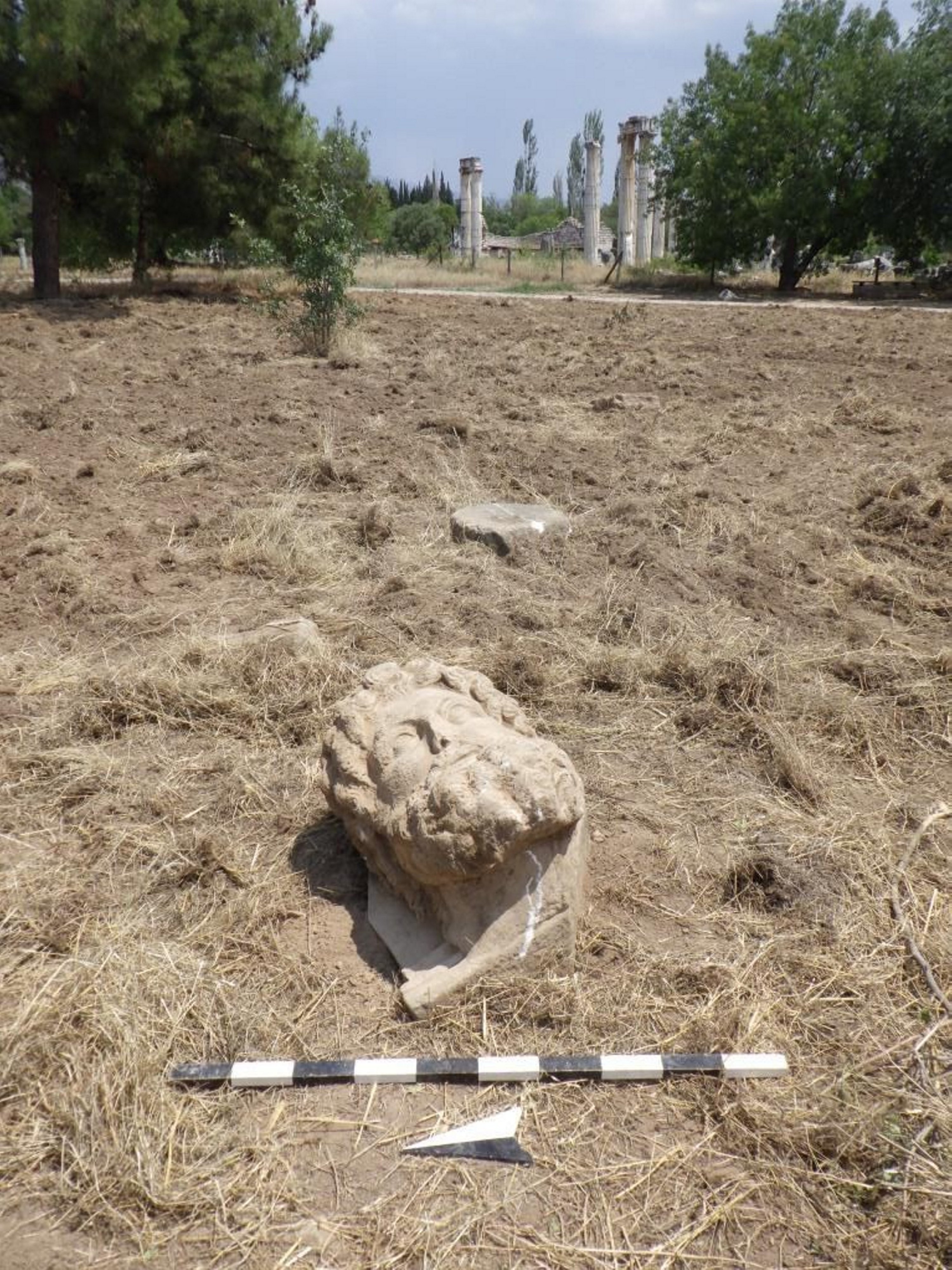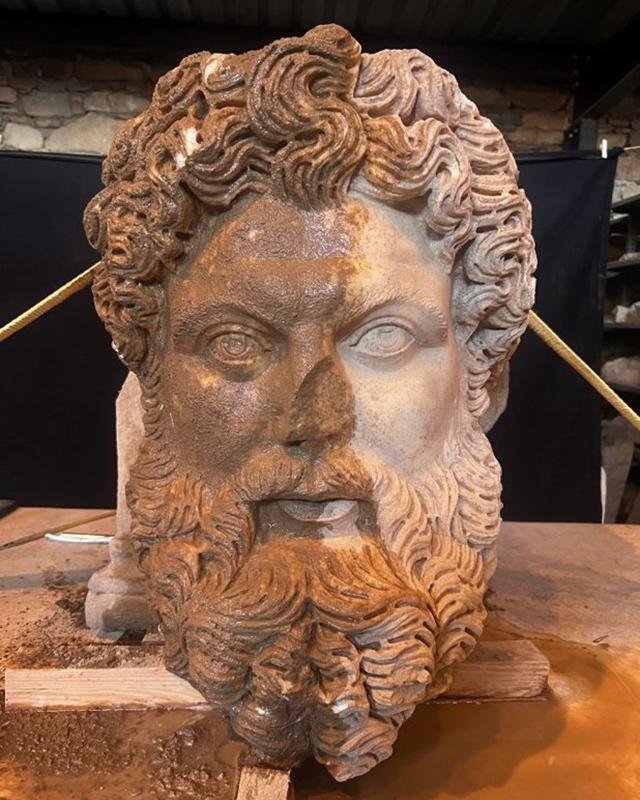A recent archaeological find in the ancient city of Aphrodisias has intrigued both historians and art lovers. Excavations close to the Sanctuary of Aphrodite have revealed a bearded marble head thought to depict Zeus, the chief deity of Greek mythology. This discovery adds to the extensive collection of artifacts from Aphrodisias, a city celebrated for its artistic and sculptural legacy.
The Historical Importance of Aphrodisias

Aphrodisias was a significant Hellenistic city in the historical region of Caria in Anatolia, Turkey. Named in honor of Aphrodite, the Greek goddess of love, it served as a crucial cult center dedicated to her, with the Sanctuary of Aphrodite at its core. In ancient times, Aphrodisias became renowned for its talented artisans and sculpture schools, which crafted and distributed exquisite architectural facades and sculptures across the Hellenistic and Roman realms.
Excavations in Aphrodisias
Over time, a variety of complete statues, trial pieces, and unfinished works have been discovered around the agora, emphasizing the city’s rich sculptural heritage. These discoveries offer valuable insights into the artistic techniques and cultural life of ancient Aphrodisias.
The Earthquake and Its Aftermath

In the early 7th century AD, Aphrodisias suffered a devastating earthquake that left the city in ruins. This disaster led to a significant decline, transforming it into a small fortified settlement focused around the ancient theatre known as the Odeon. Still, the city’s extraordinary artistic contributions continued to resonate through history.
The Latest Discovery
Turkey’s Minister of Culture and Tourism, Mehmet Nuri Ersoy, recently announced that excavations near the Sanctuary of Aphrodite have unearthed a bearded marble head, part of an architectural console. Archaeologists have identified this head as a representation of Zeus, the god of sky and thunder, recognized as the chief deity on Mount Olympus.

Minister Ersoy’s Remarks
Minister Ersoy commented, “The marble head, which has emerged after centuries in darkness, showcases the grandeur of Zeus, the most formidable and significant god in Greek mythology.” Dating back to the 2nd or 3rd century AD, the head stands 66 centimeters tall and is carved from a single block of locally sourced medium-grained Aphrodisias marble.
Artistic Mastery

This marble head exemplifies the remarkable talent of Aphrodisias’ sculptors. “The exquisite drill work on the hair and beard is characteristic of a leading sculpture workshop in Aphrodisias. The sophisticated portrayal of this powerful divine figure imparts a striking presence,” added Minister Ersoy. This detailed craftsmanship highlights the artistic excellence for which Aphrodisias was well-known.
Conclusion
The discovery of this marble head representing Zeus serves as a testament to Aphrodisias’ enduring legacy as a hub of artistic brilliance. As more artifacts continue to surface from this ancient city, they provide valuable insights into its past, revealing glimpses of the cultural and artistic achievements that once thrived there. This latest find not only enhances our understanding of ancient Greek art but also underscores the historical significance of Aphrodisias within the broader framework of Hellenistic and Roman civilizations.

